The question/answers presented here were helpful, but yet it took me some time to work through the details and actually make it work, so allow me to elaborate some more on the above, as it might help others too.
Scenario
Two tenants:
Home Tenant.Other Tenant.
One Azure App Service API app, with access managed by the Home Tenant.
One Logic app placed in a subscription in Other Tenant that need to securely access the API app in the Home Tenant.
Approach
Application registration
For the API app to delegate identity and access management to Azure AD an application is registered in the home tenant’s Azure Active Directory. The application is registered as a multi-tenant app.
You also need to create an app role (see documentation: How to: Add app roles in your application and receive them in the token), lets call it read.weather.
Configuration of Other Tenant and Logic App
To provide the Logic App access to the API app do this:
Enable a system assigned identity for the logic app - i.e. use Managed Identity. Note down the system assigned managed identity Object ID ({18a…}), you will need it in a minute.
Create a service principal for the application in the Other Tenant using this command, where appId is the appId of the application registered in Home Tenant (e.g. lets say it’s {1a3} here):
New-AzureADServicePrincipal -AppId {appId}
This command will output a json document which includes among other things an objectId for the service principal just created.
[... more json ...]
"objectId": "b08{…}",
[... more json...]
You should also see the appRoles, including the app role read.weather you just created, om the json output from the New-AzureADServicePrincipal command:
[... more json...]
"appRoles": [
{
"allowedMemberTypes": [
"Application"
],
"description": "Read the weather.",
"displayName": "Read Weather",
"id": "46f{…}",
"isEnabled": true,
"value": "read.weather"
}
],
[... more json...]
- To tie it all together make an app role assignment using the command:
New-AzureADServiceAppRoleAssignment -Id {app role ide} -ObjectId {system assigned identity object id} -PrincipalId {system assigned identity object id} -ResourceId {object id of service principal}
E.g. something like this:
New-AzureADServiceAppRoleAssignment -Id 46f… -ObjectId 18a… -PrincipalId 18a… -ResourceId b08…
- Now we are ready to set up the HTTP request in the
Logic App using the URI to the API app using Managed Identity for authentication.
Notice that the audience is needed and has the form: api://{appId}.

But wait…!
Does this mean that anyone could do this, if only they know the appId of your application registration, and wouldn’t this compromise the security of the API app?
Yes, it does, and yes indeed it could compromise the security of the API app.
If you look at the access token being created and used as bearer from the Logic App it is a valid access token, which contains all the necessary claims, including the app role(s). The access token is however issued by Other Tenant and not Home Tenant.
Therefore, if you have a multi tenanted application and you want to guard it against this scenario, then you could check the issuer (tid more likely) of the incoming access token calling the API and only accept it if the issuer is the Home Tenant, or you could make the application a single tenant app.
Or, you could require that the issuer matches a list of tenants that the API trusts.
